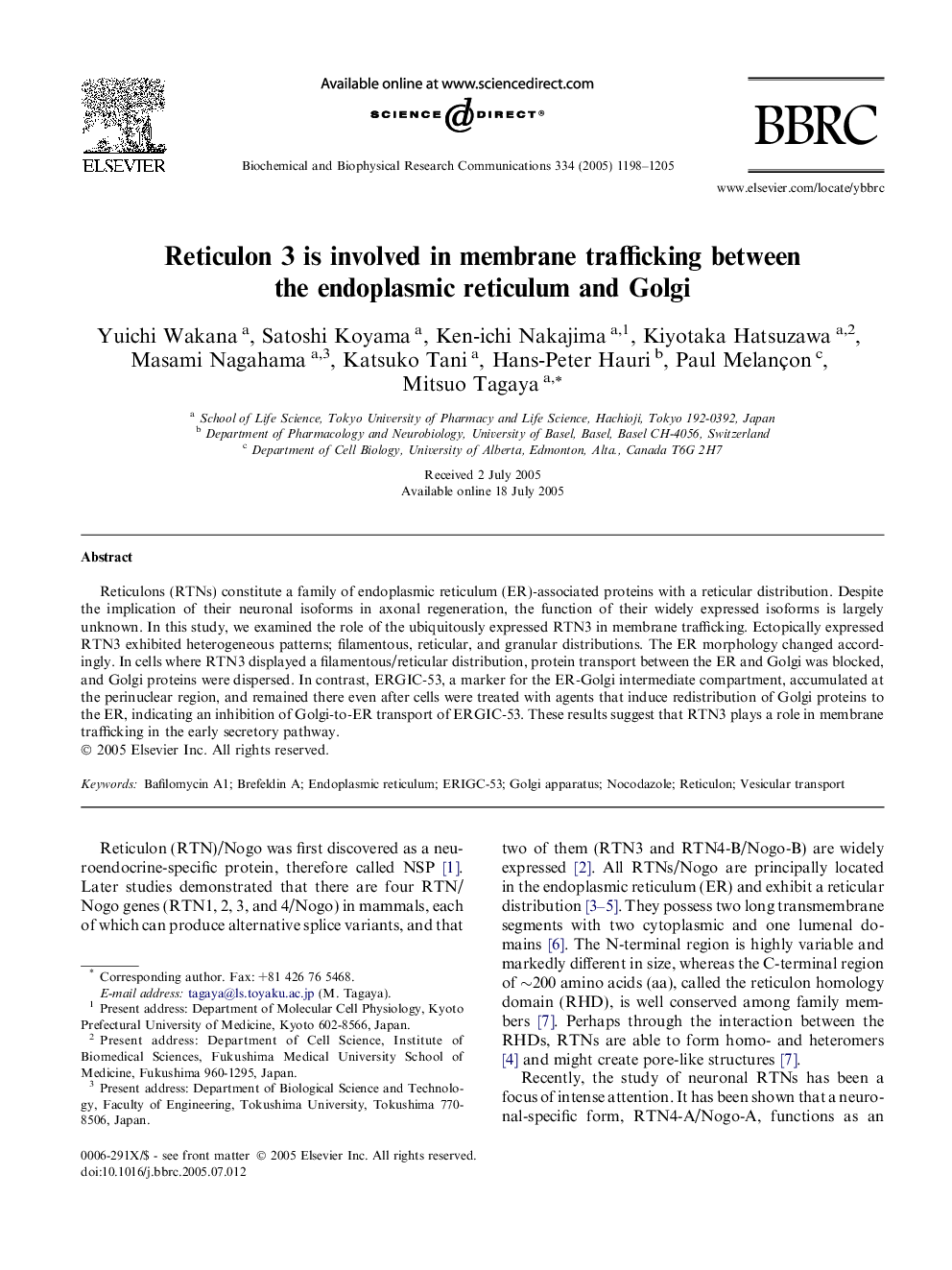| Article ID | Journal | Published Year | Pages | File Type |
|---|---|---|---|---|
| 10769034 | Biochemical and Biophysical Research Communications | 2005 | 8 Pages |
Abstract
Reticulons (RTNs) constitute a family of endoplasmic reticulum (ER)-associated proteins with a reticular distribution. Despite the implication of their neuronal isoforms in axonal regeneration, the function of their widely expressed isoforms is largely unknown. In this study, we examined the role of the ubiquitously expressed RTN3 in membrane trafficking. Ectopically expressed RTN3 exhibited heterogeneous patterns; filamentous, reticular, and granular distributions. The ER morphology changed accordingly. In cells where RTN3 displayed a filamentous/reticular distribution, protein transport between the ER and Golgi was blocked, and Golgi proteins were dispersed. In contrast, ERGIC-53, a marker for the ER-Golgi intermediate compartment, accumulated at the perinuclear region, and remained there even after cells were treated with agents that induce redistribution of Golgi proteins to the ER, indicating an inhibition of Golgi-to-ER transport of ERGIC-53. These results suggest that RTN3 plays a role in membrane trafficking in the early secretory pathway.
Keywords
Related Topics
Life Sciences
Biochemistry, Genetics and Molecular Biology
Biochemistry
Authors
Yuichi Wakana, Satoshi Koyama, Ken-ichi Nakajima, Kiyotaka Hatsuzawa, Masami Nagahama, Katsuko Tani, Hans-Peter Hauri, Paul Melançon, Mitsuo Tagaya,
